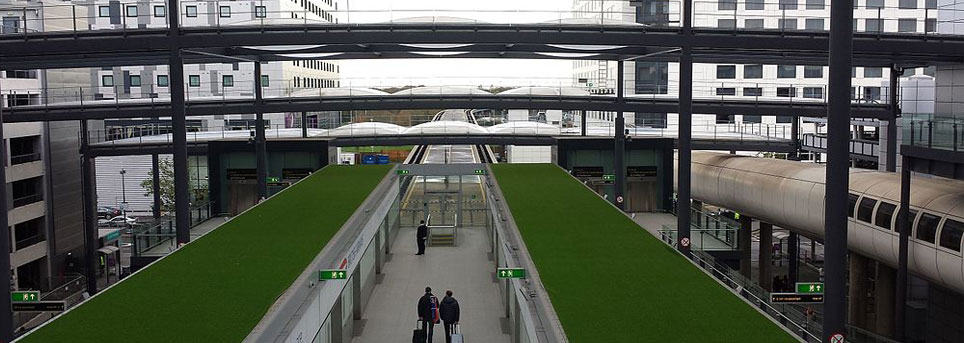The Challenge
We were asked by our client, Gatwick Airport, to produce a simulation that would quantify the benefit of constructing two PRM lifts in their terminal.
This was specifically for use by their Interterminal Transit System connecting North and South terminals, with a further main Rail network station connection and a bus station underneath. The new lifts link the Bus Station with the rail network, creating a more efficient way for those with restricted mobility to access the terminals, as the current route is inconvenient and involves having to exit the bus station.
The Solution
Our team had to analyse the data concerning two trains coming into Interterminal Transit System station at the same time. With 150 people on each train, busy trying to navigate leaving the train and getting into the terminal with their baggage, as well as those exiting the terminal wishing to get on a train, it was important to clarify that PMR volumes and the use of the proposed lifts did not interfere with the terminal design and the passenger flows negatively.
Using our bespoke modeling tool, TransvisionAiR™ and our 3D simulation experience, we were able to project the amount of space and access required to service two new lifts for PRM access from the bus station below.
We used the data to convey typical human behaviour in all of the passengers travelling through the terminal, what we refer to as ‘full human physics behaviour’. The simulations then follow designated individual passengers from from the concourse and show the design flows, objectives and outcomes, from concourse.
The Benefit
Using our simulations gave the client, stakeholders and designers the confidence that the two PRM access lifts were the only alterations needed to cope with the flow in the Interterminal Transit System.
Before designing and building the two PRM access lifts, the client was able to prove that the changes would not affect the passenger flow adversely, and also would improve the PRM flow. They could also test the system to the limits in the simulation, therefore proving that providing the lifts meant that the design of the terminal did not have to change. It could cope with trains at full capacity.
This is an extremely cost efficient method of exploring new design and build options in airport terminals, and was of great benefit to the client.
- Efficient stakeholder management
- Prevented unnecessary investment costs.
- Improved passenger customer service and airport experience
- Optimised capacity within existing structures
- Efficient communications and decisive management
- Use of data and simulation to provide effective capacity planning

